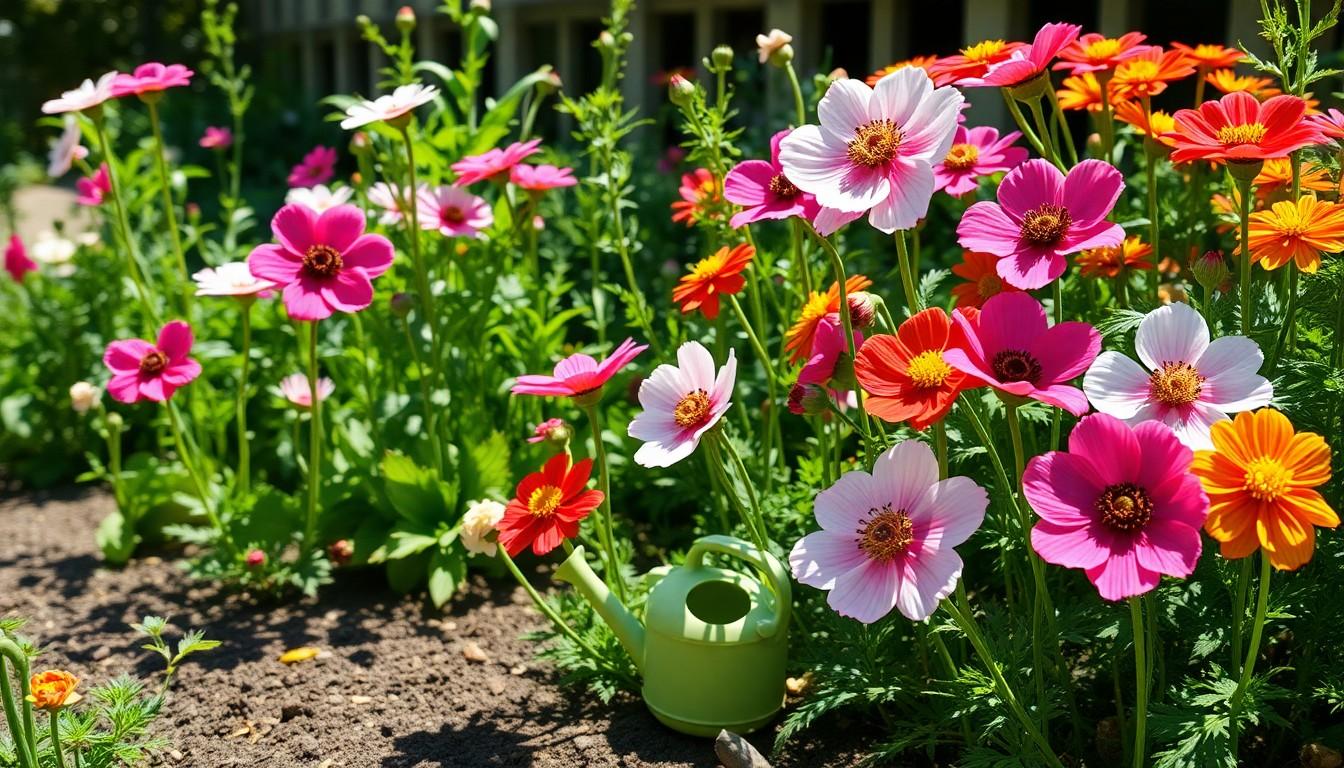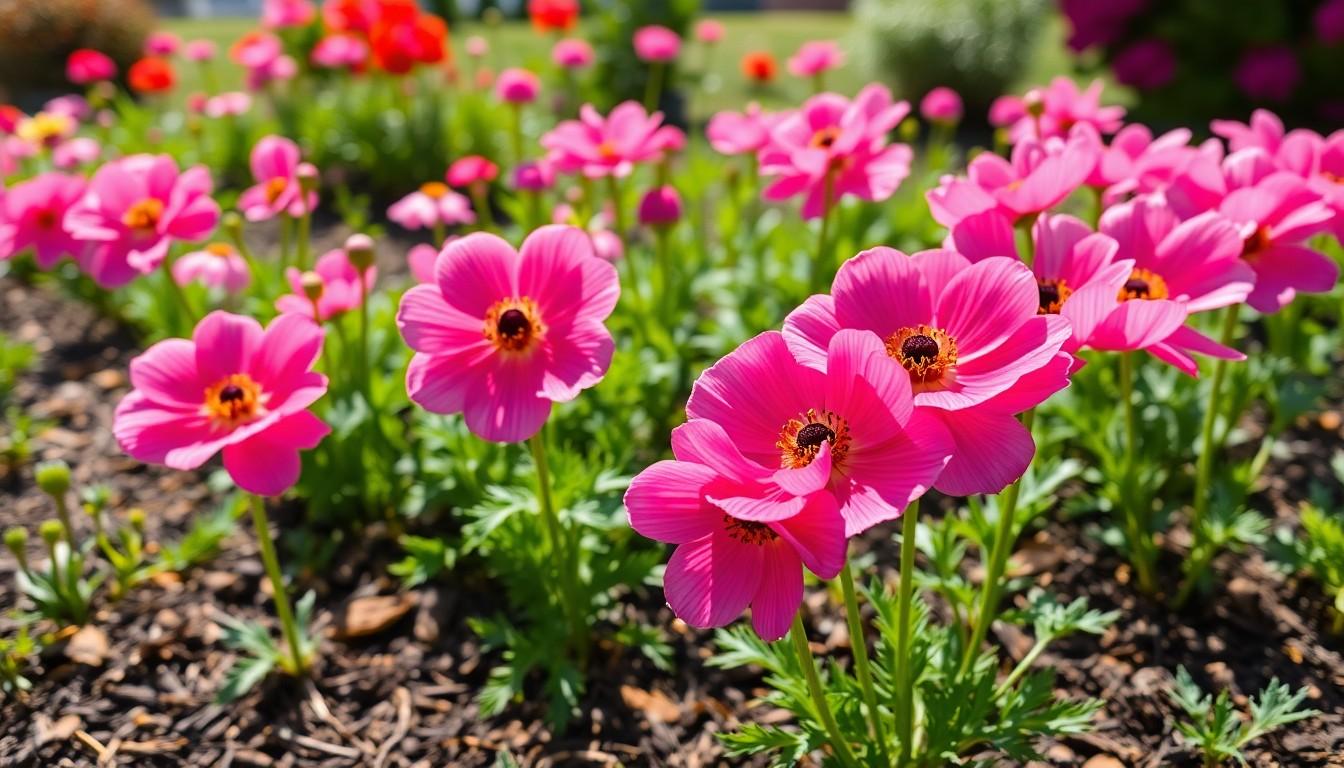The Best Fluffy Pancakes recipe you will fall in love with. Full of tips and tricks to help you make the best pancakes.

Anemone Plant Care: Unlock the Secrets to Thriving Blooms in Your Garden
If you’re looking to add a splash of color to your garden, anemones might just be the show-stoppers you need. These charming plants, with their vibrant blooms and delicate leaves, are like the divas of the flower world—demanding a bit of attention but rewarding you with stunning visuals. But don’t let their beauty fool you; they need the right care to thrive and avoid turning into wilting wallflowers.
Understanding Anemone Plants
Anemone plants stand out for their vibrant blooms and unique characteristics. These flowers excel in enhancing gardens whenever they’re cultivated with attention.
Types of Anemone Plants
Numerous anemone varieties exist, each offering distinct features. Japanese anemones are popular for their tall, elegant stems and late summer blooms. Wood anemones thrive in shaded areas, displaying delicate white flowers. Garden anemones, often called the fall-blooming anemones, feature large, showy petals in various colors. Some species, like the anemone coronaria, showcase ruffled petals and bright, striking colors.
Growing Conditions
Anemones prefer well-drained soil and thrive in full sun or partial shade. Moisture retention is crucial during their growth period. Adequate watering encourages robust growth, ensuring vibrant blooms. Proper spacing between plants allows for air circulation, reducing the risk of disease. Fertilization in spring promotes healthy development, enhancing flower quality.
Essential Anemone Plant Care

Anemone plants thrive with dedicated care and attention. Proper soil and watering practices ensure these vibrant flowers flourish.
Soil Requirements
Anemones prefer well-drained soil rich in organic matter. Sandy loam, a mixture of sand and clay, offers excellent drainage and nutrient retention. Soil pH should range from slightly acidic to neutral, ideally between 6.0 and 7.0. Amending soil with compost enhances fertility and supports healthy root development. Avoid compacted soil, as it restricts root growth and water absorption. Mulching around the base provides added moisture control and helps suppress weeds, benefiting the overall health of anemone plants.
Watering Needs
Moderate watering maintains anemone’s vibrancy. Soil should remain consistently moist, yet not soggy. After planting, initial watering is critical to establish roots, requiring regular checks in the first few weeks. During dry spells, provide deep watering, ensuring moisture penetrates the roots. Avoid overhead watering, which can lead to fungal issues. As anemones mature, adjust frequency based on weather conditions; overwatering poses a higher risk than under-watering.
Sunlight and Temperature Preferences
Anemones thrive under specific sunlight and temperature conditions. Understanding these preferences enhances their growth potential.
Ideal Sunlight Exposure
Full sun to partial shade suits anemone plants. Ideally, they benefit from 6 to 8 hours of direct sunlight daily. Japanese anemones flourish in partial shade, especially in warmer climates. Garden anemones often perform best in full sun, promoting vigorous blooms. Wood anemones tolerate shade and can thrive in woodland settings. Finding the right balance helps maintain their health and flowering capability.
Temperature and Hardiness
Temperature plays a critical role in the well-being of anemones. Most varieties prefer moderate conditions, with a temperature range of 60 to 75°F ideal for growth. Anemones exhibit hardiness, often surviving frost and cooler temperatures ranging from 30 to 40°F. Japanese and garden anemones possess greater cold tolerance than wood anemones. Regularly monitoring temperatures during extreme weather helps protect these vibrant plants. Emphasizing the right temperature conditions ensures robust growth and vibrant blooms.
Fertilization and Pruning
Anemones benefit from careful fertilization and pruning practices. Proper care in these areas promotes healthy growth and vibrant blooms.
When to Fertilize
Fertilization occurs primarily in early spring as growth begins. A balanced, slow-release fertilizer ensures nutrients are available throughout the growing season. Anemones require feeding every 4 to 6 weeks from spring until mid-summer. Applying compost in the spring boosts soil fertility and enhances its organic content. During the fall, avoid fertilizing, as this can promote unnecessary growth before winter dormancy. Monitoring plant health throughout the season helps determine if additional nutrients are necessary.
Pruning Techniques
Pruning supports healthy anemone growth and enhances appearance. Start by removing dead or damaged stems in late fall after they die back. Cutting back stems to ground level encourages new growth in spring. Deadheading spent blooms also improves appearance while promoting further blooming. For Japanese anemones, pruning in early spring will help maintain shape and prevent overcrowding. Regular monitoring of plant structure allows for timely interventions, ensuring plants remain vigorous and visually appealing.
Common Pests and Diseases
Anemones may attract various pests and diseases that threaten their health. Identifying these threats early ensures proper intervention.
Identifying Pests
Common pests include aphids, spider mites, and slugs. Aphids cling to stems and leaves, sucking sap and causing deformation. Spider mites leave fine webbing and speckled foliage, indicating their presence. Slugs damage petals and leaves, creating large holes as they feed. Checking plants regularly for these insects helps catch infestations before they escalate. Additionally, yellowing leaves may signify a pest problem, so vigilance is crucial for maintaining plant vitality.
Preventative Measures
Implementing preventative measures protects anemones from pests and diseases. Using companion planting with marigolds and garlic can deter pests naturally. Applying organic insecticidal soap effectively combats aphids and mites. Regularly cleaning garden debris and weeds minimizes hiding places for slugs. Furthermore, maintaining proper soil moisture and drainage reduces the likelihood of fungal diseases. Ensuring good air circulation around plants also prevents moisture buildup, reducing disease risk.
Conclusion
Anemones offer a stunning addition to any garden with their vibrant colors and unique forms. With the right care they can thrive and bring joy for many seasons. By focusing on soil quality watering practices and proper sunlight exposure gardeners can ensure their anemones flourish.
Regular monitoring for pests and diseases along with timely pruning and fertilization will keep these plants healthy and visually appealing. Embracing the specific needs of anemones allows gardeners to enjoy their beauty while cultivating a thriving garden environment. With dedication and attention to detail anemones can truly shine as the divas of the flower world.
